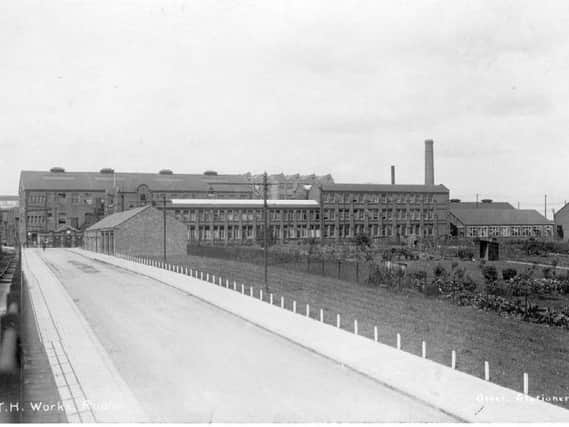Rugby's links to the Russian Revolution - including a BTH worker and Lenin's visit to Bilton Road


One summer’s day back in 1970, while working for a press agency in Southport, Lancashire, I was sent to interview the widow of the man who had briefly ruled Russia in the period between the overthrow of the Tsar and the 1917 revolution.
It’s a long time ago now and I wish I still had the cutting from the story which subsequently appeared in the Daily Telegraph.
Advertisement
Hide AdAdvertisement
Hide AdBut there is one thing that I recall, and that is as we discussed the late Alexander Kerensky the woman let it drop that after being forced into exile by the Bolshevik revolutionaries, he had fled to Britain in the early 1920s and temporarily found work at Rugby’s BTH.
When the unrest broke out in February, 1917, Kerensky was one of its most prominent leaders. He was a member of the provisional committee of the Duma, the Russian parliament, and was elected vice-chairman of the Petrograd Soviet, while simultaneously becoming the first minister of justice in the newly formed provisional government.
Kerensky became the minister of war and the dominant figure in the newly formed socialist-liberal coalition government.
Kerensky was a firm believer in the prosecution of the war against Germany, and visited soldiers at the front, urging the men to do their duty. His speeches were impressive and convincing, but had little lasting effect.
Advertisement
Hide AdAdvertisement
Hide AdUnder Allied pressure to continue the war, he launched what became known as the Kerensky Offensive.
However, Kerensky’s time in the sun did not last long. He was criticised by the military for his liberal policies, including supporting soldier committees against officers, and abolishing the death penalty.
His card was marked. A few months later, his supporters were defeated by Lenin’s Bolsheviks, and after months spent in hiding, he escaped to London in 1918.
From here, he soon moved on to Paris. And at some stage around this time, he briefly came to Rugby and joined the BTH.
Advertisement
Hide AdAdvertisement
Hide AdThis was probably because Kerensky was an engineer by profession and, because of these skills, obtained a job. That’s all I could find about his Rugby connection.
However, one man of my acquaintance also has a story to tell about the early days of the Russian Revolution. And that’s Rugby musician Tom Long, former Pinkerton’s Assorted Colours guitarist and sound expert.
He wrote to me a while back and below is an abbreviated version of what he said.
“My maternal grandfather was in the Co-operative movement. They used to do lots of Sunday treats for children. They also held political meetings on Saturday evenings.
Advertisement
Hide AdAdvertisement
Hide Ad“My mother was just a curious kid who used to like riding on her bicycle. One Saturday, they had a foreign dignitary to speak at their meeting. This was not uncommon.
“This man stayed the night at the house of another committee man who lived at the top of one of the ‘Groves’ off Lancaster Road. Mother was friends with the young girl who lived there, so went on her bike on the Sunday morning to meet this guy.
“The year was 1923 and my mother was aged eight. She later said ‘I have never seen such an evil looking man in my life’. His name? Vladimir Ilych Lenin!
“Yes I checked. Lenin was in Britain twice in 1921 and again in 1923 trying to drum up support for communism. He went back to Russia in 1924 and died soon afterwards.
Advertisement
Hide AdAdvertisement
Hide Ad“It was certainly a real coup for my mother to have been one of only a few British people to have met him. And to think he spoke at the Co-op club in Bilton Road… that’s a bit if Rugby history not many people know about.”
As for Alexander Kerensky, in 1970 his body was brought from exile in New York to a grave at Putney Vale Cemetery, Wimbledon, after being refused a Russian Orthodox funeral in America.
This was because Kerensky was hated both by the Communist regime which had overthrown him in Russia, and by the émigré Russian Orthodox Church in America which blamed him for overthrowing the last Tsar a few months earlier.
To provide a permanent resting place, his sons Oleg and Gleb had his body flown to London and buried at the non-denominational Putney Vale.
Advertisement
Hide AdAdvertisement
Hide AdFurther to the Tom Long story – and by another amazing coincidence - Kerensky was the son of a secondary school headmaster whose pupils included the young Vladimir Ulyanov - better known later as Lenin,
founder of the Soviet Union. Members of the Kerensky and Ulyanov families were friends.
But as Kerensky was about to graduate in law from St Petersburg University, Lenin, who had earlier done the same, was plotting the overthrow of capitalism from exile in London and elsewhere outside Russia.
Kerensky’s association with the BTH, his links to Lenin, Tom Long’s mother… it’s truly fascinating the way all these different threads weave together to form a patchwork of history - and with Rugby at the centre of it all.
Go and Make the Tea, Boy! John Phillpott’s book about his days on the Rugby Advertiser is available from booksellers and via the internet.